the town house
the town house
Yeovil's first Police Station
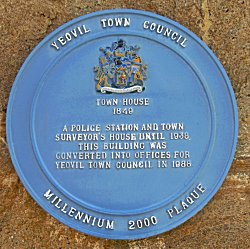 Yeovil's
Watch House, the
early equivalent
of a Police
Station, was
originally in
the
Tolle Hall
in the
Borough but
by the 1830s had
literally been
falling down for
years.
In 1845 the
Town
Commissioners
proposed
converting the
Oxford Inn
into a Watch
House and
Superintendent's
house but the
plans came to
nothing. In
1849 the
Town Commissioners
built the
building, now in
Union Street,
known as the
Town House to
provide a Police
Station and a
residence for a
Superintendent,
who was also the
Town Surveyor
and Rate
Collector.
Yeovil's
Watch House, the
early equivalent
of a Police
Station, was
originally in
the
Tolle Hall
in the
Borough but
by the 1830s had
literally been
falling down for
years.
In 1845 the
Town
Commissioners
proposed
converting the
Oxford Inn
into a Watch
House and
Superintendent's
house but the
plans came to
nothing. In
1849 the
Town Commissioners
built the
building, now in
Union Street,
known as the
Town House to
provide a Police
Station and a
residence for a
Superintendent,
who was also the
Town Surveyor
and Rate
Collector.
The new building was built on what had been a garden belonging to a Mr Granger, measuring some 60 feet deep (18.3m) with an 85 feet (26m) frontage to Union Street. To the north it was bounded by the property of the Cayme family. The garden had a small stable and a row of sheds at its southern end abutting the Portreeve's Almshouse, on the corner of Union Street and South Street, with its small garden alongside fronting South Street.
Daniel Vickery wrote in 1856 "The Yeovil Police, and the Improvement of the Town, are, under the instruction of the Corporation, in the hands of the Town Surveyor, who resides in a building called the Town House, in Wine Street, part of which is occupied as a Police Station. The force consists of one Superintendent, at 20s per week, and 4 men at 11s 6d per week in the summer, and 14s 6d in the winter. The duties of the Surveyor are multifarious; he collects the borough and highway rates, superintends the repairing, cleansing, and watering of the streets; is responsible for the sewerage of the town, pays the watchman and police, and is expected to find plans for all buildings and alterations ordered by the Corporation."
The Town House was taken over by the County Constabulary in 1857 and the building remained a Police Station until 1938. In 1903 William Uriah Self was recorded as Superintendent with four sergeants and nineteen constables. The police station transferred to the new Law Courts building in Petters Way when it opened in 1936.
To read about the Murder of PC Penny outside the Red House - click here.
The late Tony Robins informed me that the Town House was the headquarters and club of the Yeovil branch of the Royal Air Force Association (RAFA) in the 1950s, the bar was in one of the cells. RAFA later moved to a building at Fiveways, now demolished.
In 1984 the Town House was acquired by Yeovil Town Council and the adjoining building was purchased in 1994 and converted into the Mayor's Parlour. This is situated on what was the exercise yard in front of the three police station cells which still exist, albeit now only used for document storage.
gallery
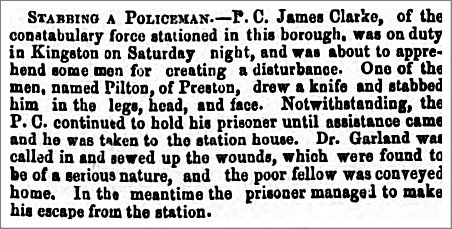
It's never been easy being a policeman as testified by this article from the 10 September 1864 edition of the Somerset County Gazette
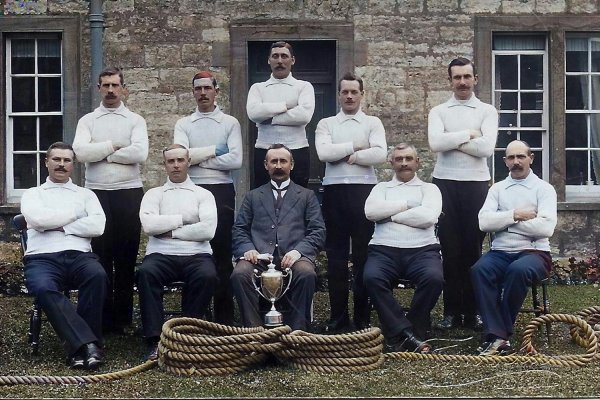
(Colourised)
Courtesy of
Chris Priddle
The Yeovil Police tug-o-war team, photographed outside the Town House in 1914. They proudly display the cup they won in a competition at Taunton, sitting on top of the tug-o-war rope. Only people known in this photo are Sgt Harry Coats - front row at left - and next to him is Sgt Alfred Edward Brooks..
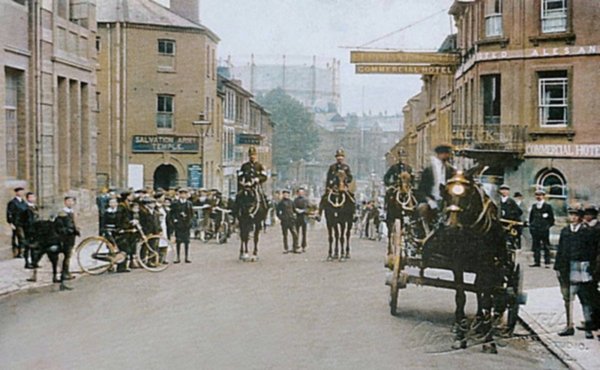
Courtesy of
George Hallett
-
This
colourised photograph
features in my
book 'Yeovil From Old Photographs'.
In 1918, the date of this Rendell photograph, the traffic cops of their day line up outside the Elephant & Castle in Middle Street. Note the gasometer dominating the view into town.
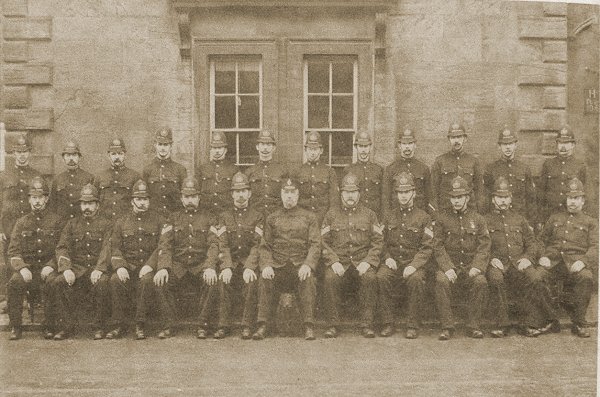
The Yeovil
Constabulary,
photographed
outside the
Police Station
(the Town House)
circa 1920.
Spot the
vicious-looking
police dog!
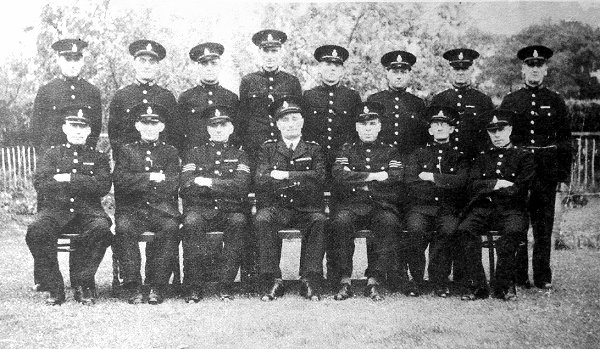
The Yeovil
Constabulary,
photographed
around the time
of the move to
the now Police
Station in
Petters Way.
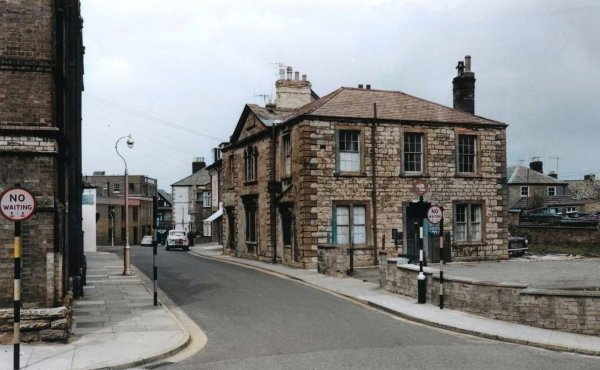
From the Cave
Collection
(colourised),
Courtesy of South Somerset Heritage Collection
This photograph of the mid-1960s shows the Town House before being extended. Note the lack of the extension at right and the absence of the nice porch on the South Street elevation.
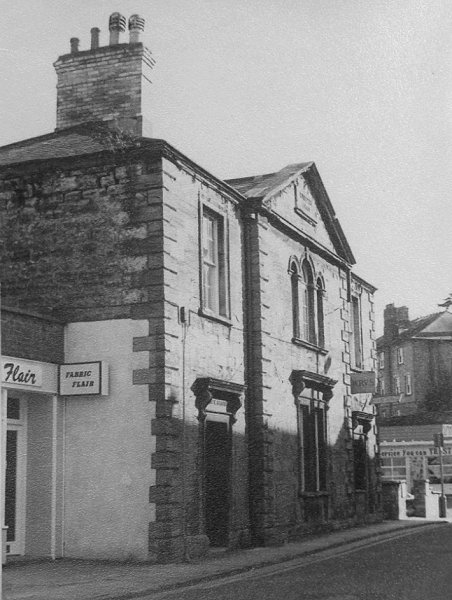
The Town House, seen in the 1970s from Union Street looking towards South Street.
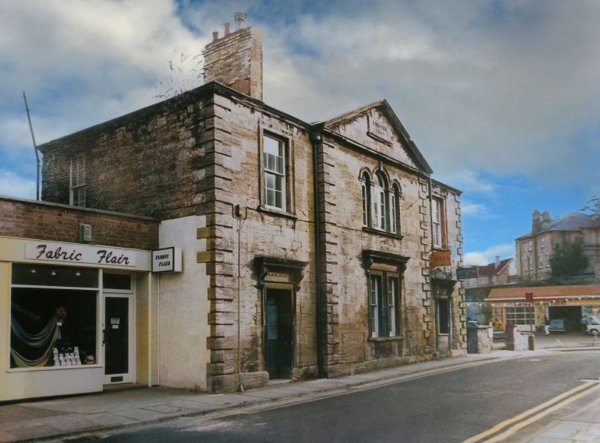
.... and a more frontal view in a colourised photograph.
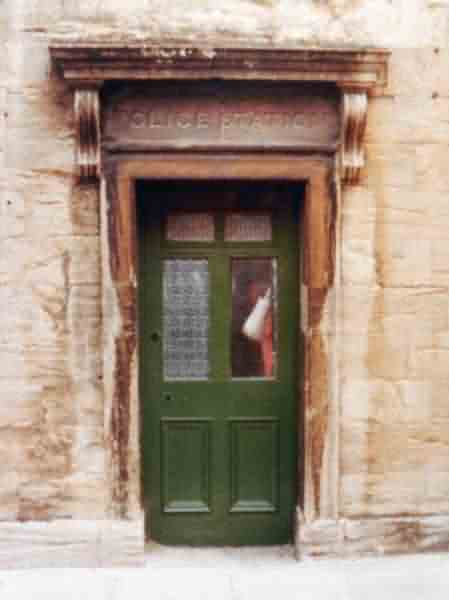
Courtesy of
Rob Baker
The doorway to the old Police Station before it was converted to a window.
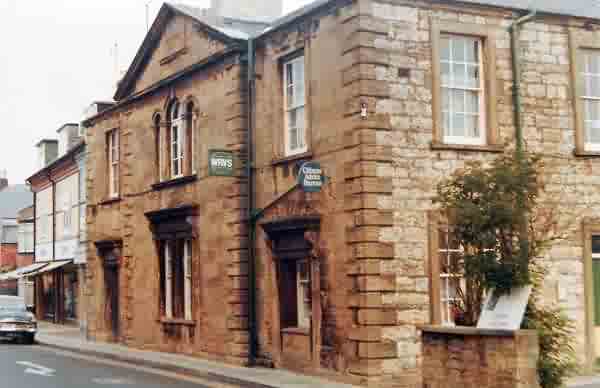
Courtesy of
Rob Baker
The Town House in the mid-1980s, before the South Street elevation was rendered and colour-washed. At this time it was home to the Citizens' Advice Bureau and the WRVS.
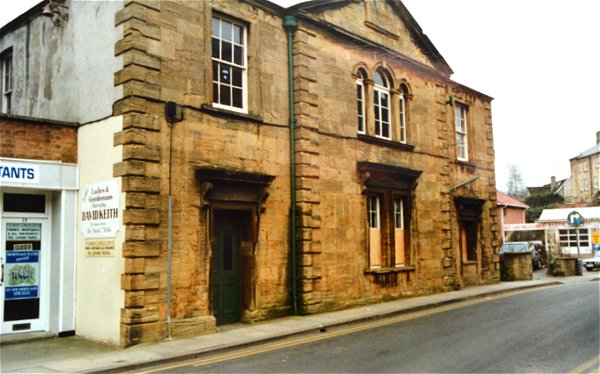
Courtesy of
Chris Rendell
The Town House, photographed from Union Street in 1988.
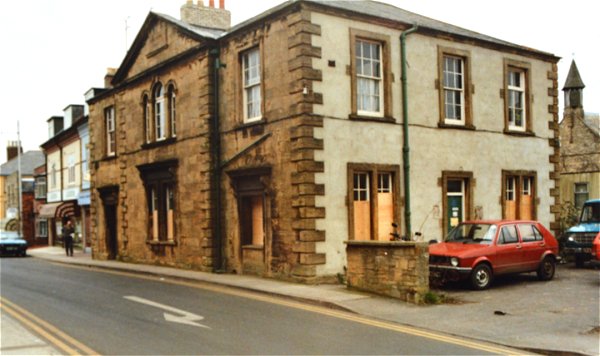
Courtesy of
Chris Rendell
-
This photograph
features in my
book 'Yeovil
From Old
Photographs'
.... and seen from closer to South Street in 1988. The South Street elevation has been rendered and smartened up although the Doric portico has yet to be added.
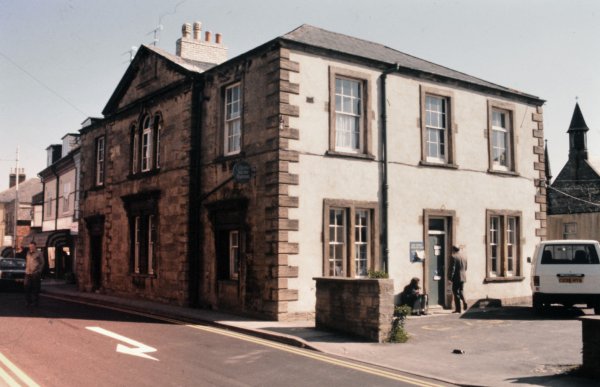
Another 1988 photograph, but with the windows unboarded.
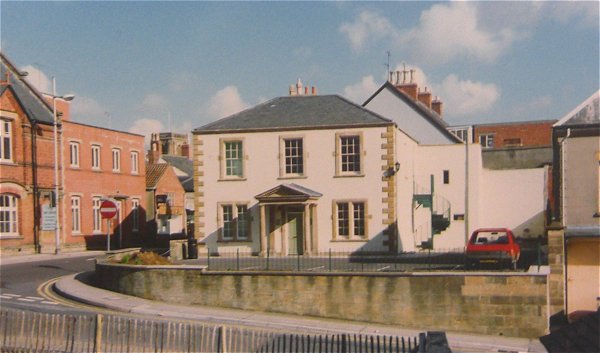
The Town House photographed from South Street in the early 1990s before it acquired the extension on its right hand side.
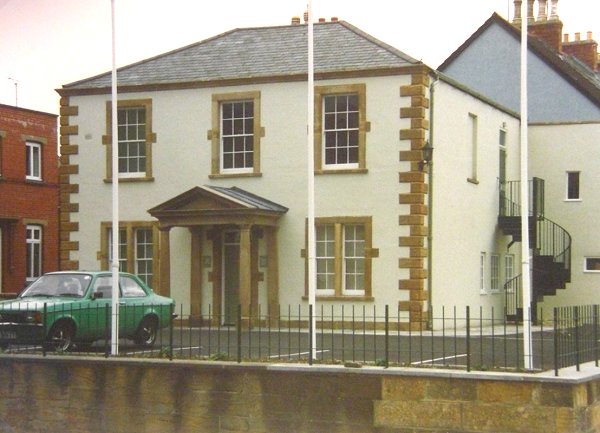
Who knew the Town House had a set of flag poles? I don't think I've ever seen a flag run up them.
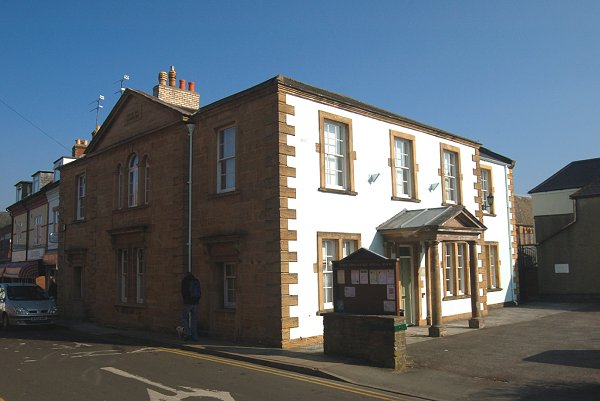
Almost the same view in 2013 - with the porch and side extension.
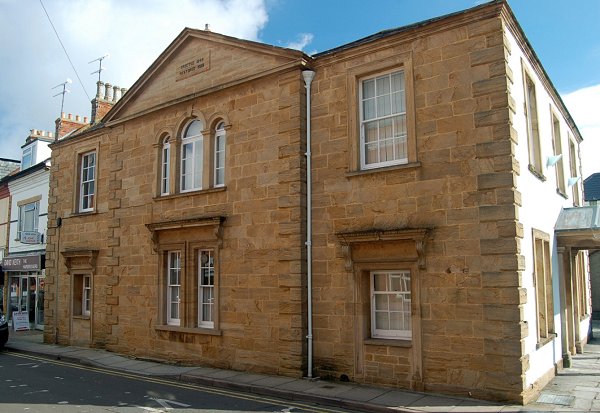
The Union Street elevation, photographed in 2013.
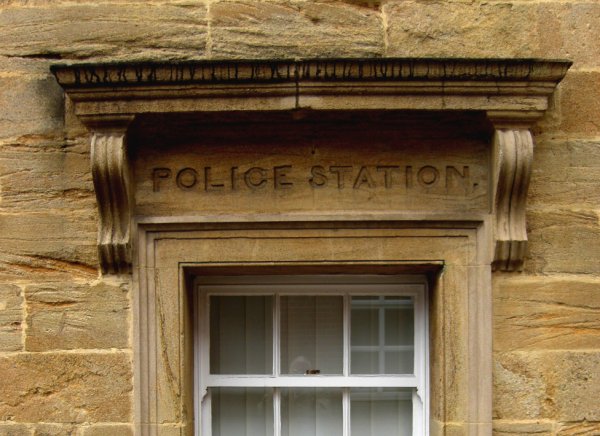
The original entrance to the Police Station was in Union Street. The doorway is now converted to a window but the sign remains. Photographed in 2013.
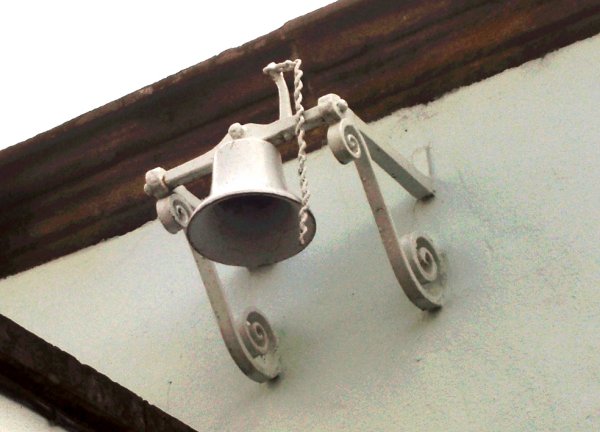
This photograph
features in my
book "A-Z
of Yeovil".
On the rear of the building just below the eaves, this bell was used to summon the Fire Brigade in times of emergency. Photographed in 2013.
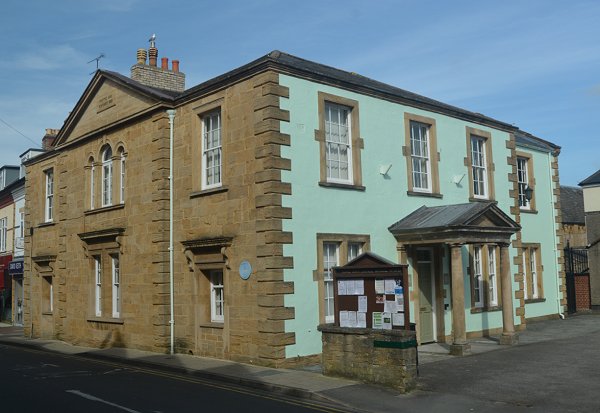
This photograph
features in my
book "Yeovil
In 50 Buildings"
The elevation to South Street is now painted pale green. Photographed in 2017.
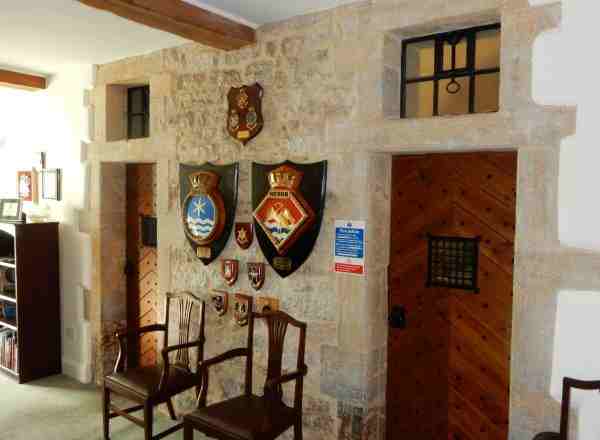
This
photograph
features in my
book "Lost Yeovil"
The original Police Station cells, today entered from the Mayor's Parlour.
The large plaque on the wall at the left is the crest of HMS Hesperus, presented to the Borough of Yeovil in 1942 by the Commissioners of the Board of Admiralty. HMS Hesperus was 'adopted' by Yeovil and District following National Savings "Warship Week". that began on 28 February 1942, in which the building cost, in excess of £300,000 (just under £15 million at today's value) was raised. Photographed in 2018.